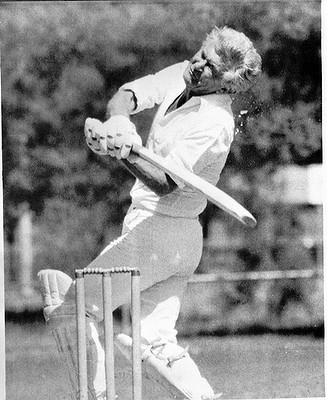1. Which of these important concepts/groups are not mentioned anywhere in Australia’s Constitution:
(a) political parties
(b) local government
(c) the original inhabitants
(d) the prime minister
(e) ministerial salaries
2. In the early years of Australia’s federation, Governors-General were appointed by the British government and were usually English noblemen.
Australians have been appointed to the office continually since:
(a) 1945
(b) 1955
(c) 1965
(d) 1975
3. When were Indigenous people living in the Northern Territory first given the right to vote in Australian elections:
(a) 1895
(b) 1901
(c) 1962
(d) 1967
4. Women were first given the right to vote in Australia’s federal elections in:
(a) 1901
(b) 1903
(c) 1913
(d) 1921
5. The Australian Constitution says the Senate shall be composed of senators from each State, voted for directly by the people of the State, voting as one electorate. One state government, however, is given the power to “make laws dividing the State into divisions and determining the number of senators to be chosen for each division” – but only one.
Which state?
(a) Queensland
(b) New South Wales
(c) Western Australia
(d) New Zealand
(e) South Australia
6. According to Australia’s Constitution, what is the maximum period allowed between sittings of the federal Parliament?
(a) 50 days
(b) 100 days
(c) 200 days
(d) 365 days
(e) unspecified
7. Which one of these propositions about Australia is false:
(a) Australia is the only country in the Organisation for Economic Cooperation and Development (34 wealthy, free-enterprise democracies) which enforces compulsory voting at elections.
(b) The last colony to extend the right to vote to all women over 21 was New South Wales in 1908.
(c) Since Australia introduced compulsory voting in 1924, the turnout has never been lower than 90 per cent.
(d) Four women were candidates in the 1903 federal election, the first time in the British Empire.
(e) Under Australia’s single transferable vote system for the Senate, candidates usually need only about 14 per cent of votes to get elected.
8. Which one of the following political parties is not registered with the Australian Electoral Commission?
(a) Australian Sex Party
(b) Bank Reform Party
(c) Socialist Equality Party
(d) Democratic Socialist Party
(e) Animal Justice Party
(f) Pirate Party Australia
(g) Australian Fishing and Lifestyle Party
9. What do all these Australian federal officials have in common:
The Ambassador to China
The Ambassador to Iraq
The Consul-General in Los Angeles
The Minister for Sport
The Minister for Finance
The Minister for Health
The Minister for Community Services and Indigenous Affairs
The Prime Minister
The Governor General
The Monarch
10. Imagine an inner city electorate for the House of Representatives with four candidates. Each receives the following percentage of the votes with preferences distributed as shown. Assume cascaded preferences are distributed the same as earlier preferences.
Question: which party wins the seat?
(a) Liberal 48 per cent. Preferences distributed evenly to the other three candidates.
(b) Labor 22 per cent. All preferences to Greens.
(c) Greens 18 per cent. Preferences distributed evenly to the other three candidates.
(d) Wikileaks 12 per cent. Preferences one quarter to Labor, three quarters to Greens.
11. Imagine a country electorate for the House of Representatives with five candidates. Each receives the following percentage of the votes with preferences distributed as shown. Assume cascaded preferences are distributed the same as earlier preferences.
Question: which party wins the seat?
(a) Nationals 30 per cent. Preferences distributed evenly to the other three candidates.
(b) Clive Palmer’s United 22 per cent. Preferences split one third to the Nationals and two thirds to One Nation.
(c) Liberal 20 per cent. Preferences split half to the Nationals and half to One Nation.
(d) One Nation 18 per cent. Preferences one quarter to Greens, three quarters to Labor.
(e) Greens 10 per cent. Preferences split half to Clive Palmer and half to One Nation.
12. Match the missiles!
Which of the following six objects has been hurled at these prominent Australians, or ex-Australians: a glass of water, a cream pie, a cricket ball, shoes, a vegemite sandwich, a whole roast chicken?
(a) John Howard
(b) Julia Gillard
(c) Rupert Murdoch
(d) Merv Hughes
(e) Bob Hawke
(f) Paul Hasluck
Bonus point: the glass of water was thrown by whom?
Answers
 1. (a), (b), (c) and (d) are not mentioned. Only (e) ministerial salaries. Chapter II, paragraph 66.
1. (a), (b), (c) and (d) are not mentioned. Only (e) ministerial salaries. Chapter II, paragraph 66.
2. (c) Only since 1965, with the appointment of Richard Gardiner Casey.
3. (a) 1895. The Government of South Australia ruled all adults could vote at elections. This was intended to include women, but the wording automatically included Indigenous people – but only in SA and the NT. Later overturned.
4. (b) 1903, following the Franchise Act of 1902.
5. (a) Queensland. Part II paragraph 7.
6. (d) One year. Part I, paragraph 6.
7. (b) is false. The last colony to allow to all women to vote was Victoria in 1908.
8. (d) There is no Democratic Socialist Party. Although there is the Socialist Alliance as well as the Socialist Equality Party.
9. All women.
10. (c) Greens.
11. (d) One Nation.
12. (a) John Howard – shoes
(b) Julia Gillard – a vegemite sandwich
(c) Rupert Murdoch – a cream pie
(d) Merv Hughes – a roast chicken
(e) Bob Hawke – a cricket ball
(f) Paul Hasluck – glass of water.
The water was thrown by then Opposition Leader Gough Whitlam.
Disputes welcome and correspondence will be entered into.
Donate To New Matilda
New Matilda is a small, independent media outlet. We survive through reader contributions, and never losing a lawsuit. If you got something from this article, giving something back helps us to continue speaking truth to power. Every little bit counts.



